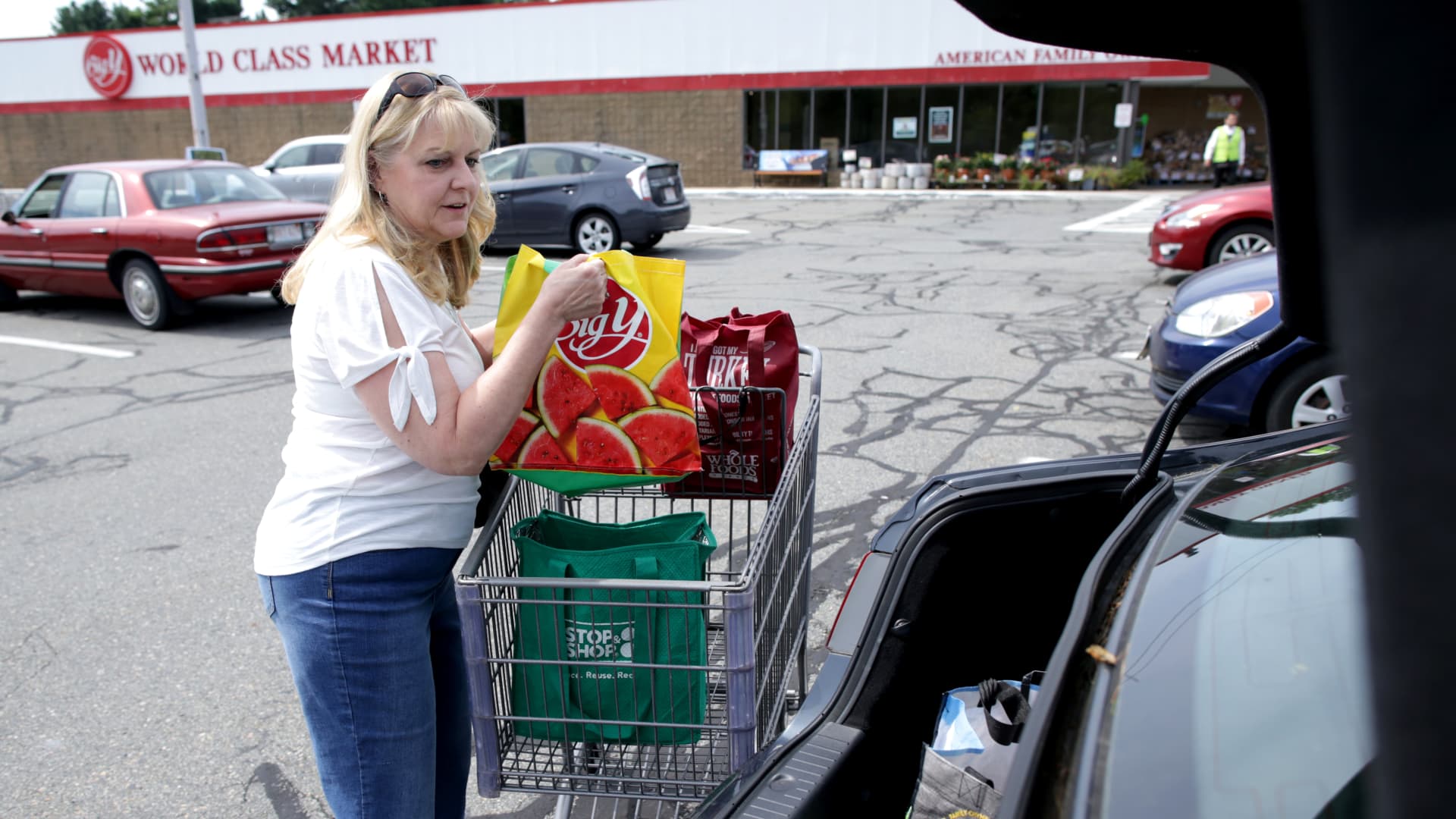
This week, the Federal Reserve will likely raise rates for the sixth consecutive time to combat inflation, which is still running at its fastest pace in nearly 40 years.
The U.S. central bank has already raised its benchmark short-term rate 3 percentage points since March, including three straight 0.75 percentage point increases ahead of its upcoming policy meeting.
“The impact of what’s been done isn’t fully reflected yet,” said Chester Spatt, professor of finance at Carnegie Mellon University’s Tepper School of Business and former chief economist of the Securities and Exchange Commission. “Inflation hasn’t come down much so far, in part because these policies take a while to kick in,” he said.
In the meantime, “the impacts on the consumer have created potentially difficult economic circumstances and are likely to get considerably worse as we get more of these rate hikes kicking in,” he added.
More from Personal Finance:
How Fed’s interest rate hikes made borrowing costlier
Tips to help stretch your paycheck amid high inflation
‘Ugly times’ are pushing record annuity sales
The next rate hike, which is widely expect to be the fourth straight 0.75 percentage point increase, will correspond with another rise in the prime rate and immediately send financing costs higher for many types of consumer loans.
“The cumulative effect of rate hikes is what is really going to have an impact on the economy and household budgets,” said Greg McBride, Bankrate.com’s chief financial analyst.
In fact, borrowing is already substantially costlier for consumers across the board.
What a rate hike means to you
The federal funds rate, which is set by the central bank, is the interest rate at which banks borrow and lend to one another overnight. Although that’s not the rate consumers pay, the Fed’s moves still affect the rates consumers see every day.
From your credit card and car loan to mortgage rate, student debt and savings, here’s a breakdown of some of the major ways rate increases impact you:
1. Mortgages
Although 15-year and 30-year mortgage rates are fixed and tied to Treasury yields and the economy, anyone shopping for a new home has lost considerable purchasing power, partly because of inflation and the Fed’s policy moves.
Along with the Fed’s vow to stay tough on inflation, the average interest rate on the 30-year fixed-rate mortgage is now near 7%, according to the latest data from the Mortgage Bankers Association.
“Rates resumed their record-setting climb,” said Sam Khater, Freddie Mac’s chief economist, “with the 30-year fixed-rate mortgage reaching its highest level since April of 2002.”
As a result, “demand has completely fallen off the table,” McBride added. “Affordability was strained already from the surge in home prices, when you layer on top of that this never-before-seen pace in mortgage rates it compounds the problem.”
The increase in mortgage rates since the start of 2022 has the same impact on affordability as a 35% increase in home prices, according to McBride’s analysis. “If you had been approved for a $300,000 mortgage in the beginning of the year, that’s the equivalent of less than $200,000 today.”
Adjustable-rate mortgages and home equity lines of credit are pegged to the prime rate. Most ARMs adjust once a year, but a HELOC adjusts right away. Already, the average rate for a HELOC is up to 7.3% from 4.24% earlier in the year.
2. Credit cards
A shopper uses a credit card to pay for her items at a Wal-Mart Supercenter in Denver.
Matthew Staver | Bloomberg | Getty Images
Since most credit cards have a variable rate, there’s a direct connection to the Fed’s benchmark. As the federal funds rate rises, the prime rate does, as well, and credit card rates follow suit.
Annual percentage rates are “closing in on 19%,” on average, up from 16.3% at the beginning of the year, according to Bankrate.
Further, households are increasingly leaning on credit cards to afford basic necessities since incomes have not kept pace with inflation, McBride said, making it even harder for borrowers to get by.
If the Fed announces a 75 basis point hike as expected, consumers with credit card debt will spend an additional $5.1 billion on interest this year alone, according to a new analysis by WalletHub.
3. Auto loans
Even though auto loans are fixed, payments are getting bigger because the price for all cars is rising along with the interest rates on new loans, so if you are planning to buy a car, you’ll shell out more in the months ahead.
“Car loan rates are the highest in 11 years,” McBride said. The average interest rate on a five-year new car loan is currently 5.63%, up from 3.86% at the beginning of the year and could surpass 6% with the Fed’s next move, although consumers with higher credit scores may be able to secure better loan terms.
Still, it’s not the interest rate but the sticker price of the vehicle that’s causing an affordability crunch, McBride said. “It’s the $45,000 or $50,000 people are borrowing that’s the problem.”
Paying an annual percentage rate of 6% instead of 5% would cost consumers $1,348 more in interest over the course of a $40,000, 72-month car loan, according to data from Edmunds.
4. Student loans
Kevin Dodge | The Image Bank | Getty Images
The interest rate on federal student loans taken out for the 2022-2023 academic year already rose to 4.99%, up from 3.73% last year and 2.75% in 2020-2021. It won’t budge until next summer: Congress sets the rate for federal student loans each May for the upcoming academic year based on the 10-year Treasury rate. That new rate goes into effect in July.
Private student loans tend to have a variable rate tied to the Libor, prime or Treasury bill rates — and that means that, as the Fed raises rates, those borrowers are also paying more in interest. How much more, however, will vary with the benchmark.
Currently, average private student loan fixed rates can range from 3.22% to 14.96% and 2.52% to 12.99% for variable rates, according to Bankrate. As with auto loans, they vary widely based on your credit score.
Of course, anyone with existing education debt should see where they stand with federal student loan forgiveness.
5. Savings accounts
On the upside, the interest rates on some savings accounts are also higher after consecutive rate hikes.
While the Fed has no direct influence on deposit rates, they tend to be correlated to changes in the target federal funds rate, and the savings account rates at some of the largest retail banks, which have been near rock bottom during most of the Covid pandemic, are currently up to 0.21%, on average.
Thanks, in part, to lower overhead expenses, top-yielding online savings account rates are as high as 3.5%, much higher than the average rate from a traditional, brick-and-mortar bank, according to Bankrate.
As the central bank continues its rate-hiking cycle, these yields will continue to rise, as well. “We’ll see 4% before the beginning of the year,” McBride said.
Still, any money earning less than the rate of inflation loses purchasing power over time.

